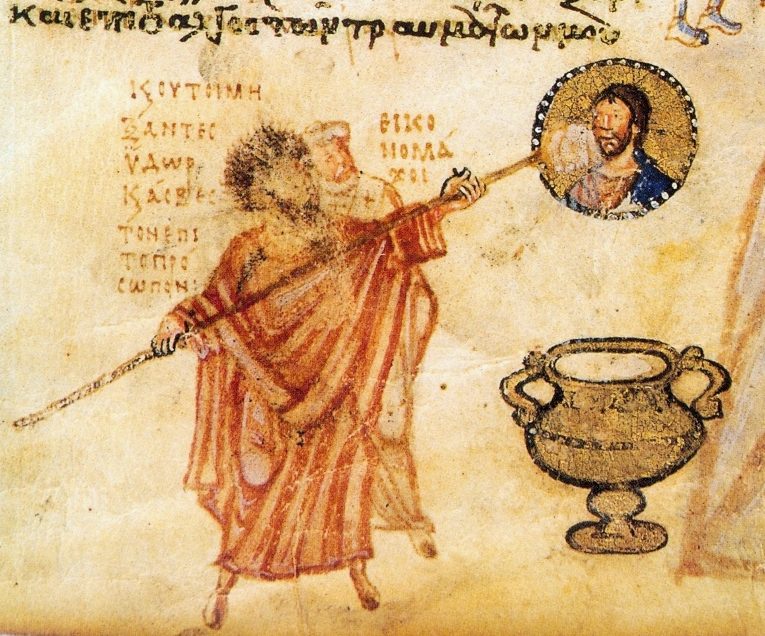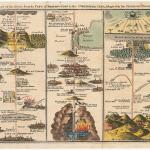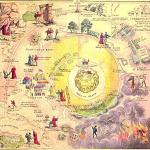If you get to name a controversy, then your side is well on the way to winning the contest. That observation occurs to me as I pursue my present book project, on the theme of the great Iconoclast debate that tore apart the Roman/Byzantine Empire of the eighth and ninth centuries. In many ways, that whole affair was not about iconoclasm at all. It was about much more than that, and in fact gets to many issues that still speak to us today. It is also a prize example of how the act of naming a battle wins the day.
If I say the word iconoclasm, it summons a mental picture. A person smashes an image, an eikon, perhaps because they think it is an idol being subject to improper worship. Such acts have often occurred through history, for instance in the Protestant Reformation, not to mention at the hands of modern day Islamist radicals. But the very word is tendentious because it suggests a particular sequence of actions. Of necessity, there must first be an image, which some person or group then attacks and breaks: the second part of the word derives from the verb klao, which means to break. Such terminology places the impetus for the conflict wholly on one side. It implies that images or icons were of course present, normal, and customary, until they were broken through some intrusive and unnatural act, and one of outright violence. It creates a sense of a society thoroughly and properly suffused in icons and holy images, until a bizarre heretical sect suddenly arrives with its eccentric ways.
But let’s frame it another way (Sorry about the pun on “frame”). Much of the debate over iconoclasm in the past two decades concerns how recently the churches had come to accept images or icons, and when they started attaching such supernatural importance to them. By some accounts, which I don’t necessarily accept, this was a new development of the generation or so before the iconoclastic controversy erupted. In that sense, icons were neither as normal nor inevitable as they later became.
Yes, the iconoclasts of the Byzantine times did, on occasion, smash holy images and icons. But more generally, they just favored having churches without such images, and built or restored them accordingly. And as we look back from our present point of view, such an approach surely makes good sense to a great many people. The ugly word “iconoclast” suggests a false contrast, between churches that have abundant images and icons, and those that lack them, presumably because they have smashed or broken them. But we venture into a modern-day church facility that lacks any ornaments besides a plain cross – say, a Pentecostal congregation, or an evangelical megachurch – we do not call it “iconoclastic.” The correct word is “aniconic” – that is, non-image – and we note and appreciate the religious sensibility it illustrates, whether or not that differs from our own. I look at the (very) many Baptist churches that are so easily found in and around Waco, Texas. Nor are mosques or synagogues iconoclastic in their decoration: they have not smashed their images, they just prefer not to have them.
Of itself, a dislike of images is in no sense a hallmark of extremism or violence, and especially of images credited with wonder-working powers. We do not have to go far back in time to read the horrified accounts written by American or British Protestants visiting Catholic nations such as Italy or Mexico, and witnessing the fervor aroused by miraculous statues and shrines very comparable to their counterparts of the Mediterranean world of the seventh and eighth centuries. Those Protestants were scornful of the Christian credentials of believers they regarded as benighted savages practicing vulgar superstitions, and of the cynical priests and monks who exploited them for their own corrupt ends. The concept of superstition is highly subjective, and malleable. Those Protestants hated the images, and had it been in their power, they would assuredly have removed them, or at least tried to persuade people that they were unnecessary.
When you speak of iconoclasm, you are suggesting that icons (images) are normal and standard, and maybe even the only correct approach to worship. Iconoclasts have strayed from that desirable norm. In fact, you can be anti-image without being iconoclast.
Actual breaking, moreover – “-clasm” – is only one extreme way of combatting what one believes to be an excessive or improper devotion to material objects. An anti-image policy might involve a broad spectrum of interventions. It could mean removing the items in question, or covering them over, for instance by whitewash or even a curtain, so that they might in theory be restored in the future. During the Second Iconoclasm of the ninth century, authorities tried to remove those images at lower heights in churches, where they might attract devotional acts, but without touching other objects that were less accessible. A government might allow most or all images to remain in place, while penalizing devotional acts such as prostration or lighting candles. It might even decide not to introduce images when building or restoring a church. At various points during the “Iconoclast era,” authorities imposed many such restrictions on the use of images, but none had the same rhetorical force of “iconoclasm,” with its connotations of mindless vandalism.
When the iconophiles won, they deliberately chose the harshest and most negative label for their foes. The fact that we today use that language 1200 years later shows how thoroughly the pro-image people won the war through that act of naming.
Imagine a contemporary example. A Jewish congregation loses its building temporarily, perhaps through a fire or an act of vandalism. While it is awaiting reconstruction, a hospitable Christian congregation offers the use of its own church so that the Jews can hold their services, and the Jews accept gratefully. Both sides agree that just during service times, any images that might be provocative will be covered up with a sheet, and that obviously includes a crucifix. Everyone is happy, and we would never imagine this transaction as an act of iconoclasm. Nobody has broken anything: they have covered something up, temporarily. But in fact, that is not too far removed from what happened in many instances in the Iconoclast Era of the eighth and ninth centuries. Aniconic does not mean iconoclastic.
When you want to discredit a faction or a side in an argument, you give it the most extreme and most unpopular name you can find. Imagine for instance that the Progressive opponents of evangelical activists today labeled any and all evangelical Christians who are active in culture war politics as “snake handlers.” Snake handlers do exist, but they are rare, and this would be an outrageous act of guilt by association with wild extremists. That is close to what happened to the “Iconoclasts” of the Early Middle Ages.
To speak of an “Iconoclast Era” or “Iconoclast Crisis” can imply that anti-image sentiment this was a problem to be solved, so that correct normality could be restored. If the iconoclasts had won the battles and written the history books, then today, presumably, we would remember the eighth and ninth centuries as the time of “the Idolatry Controversy,” when the heretical innovators who brought icons into the churches were thoroughly purged, so that those buildings could be returned to their pristine original Christian state. From that (imaginary) perspective, the question would not have been why image-breaking arose at the time it did, but rather why it had taken good Christians so long to rise up against the sins of the idol-worshipers. Learned scholars today would be publishing books with titles like “The Oxford Handbook of Byzantine Idolatry” (no offense intended to Oxford on that one).
To name is to control.













